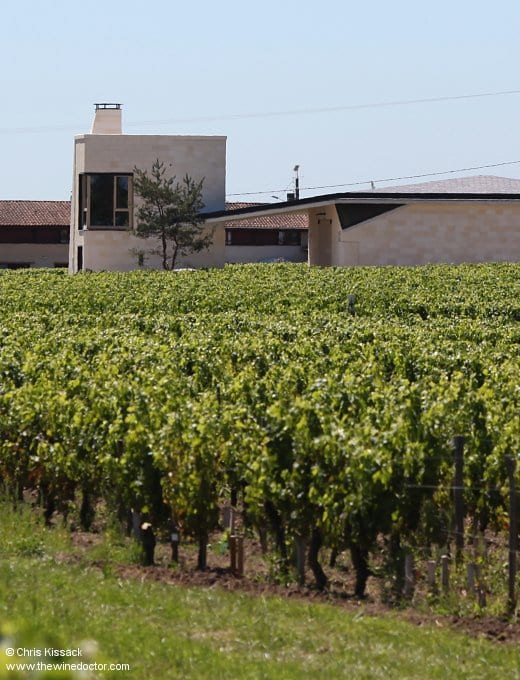Le Pin: The Modern Era
As I have already espoused, Jacques Thienpont’s focus was always the vineyard. The expansion was modest and gradual; several of the plots that were acquired (other than that purchased from the blacksmith, which was more than half a hectare) were barely more than a few rows of vines. In each case quality was judged before decided whether the fruit is up to the standard required for Le Pin. And so when I first visited, more than two decades since Jacques Thienpont, together with his father and uncle, purchased the vineyard, the wine was still being made in the cellar of the old house. The floor was concrete not earth, the barrels clearly new and not second-hand, but these appeared to be the only major upgrades that had been undertaken. Ultimately, however, Jacques recognised that the cellars needed to be refurbished. Or perhaps rebuilt.
The old house was unfortunately deemed unfit for restoration, the structure too weak (I fancy it was probably deemed too ugly myself), and the decision was taken to demolish it and build anew. Although it was not an attractive house I am saddened a little by this loss to the Pomerol landscape; regardless of the fact it was not very easy on the eye, this was the original Le Pin, the house that came with the vines that made the wine. It might not have had the grand appeal of Château Cheval Blanc or Château L’Évangile, other estates I visited or drove past on the day I first called in at Le Pin, but it was no less relevant to the story of the estate or to all Bordeaux. No-one would dream of demolishing those châteaux. For Le Pin, however, there was perhaps no other option.

Please log in to continue reading:
